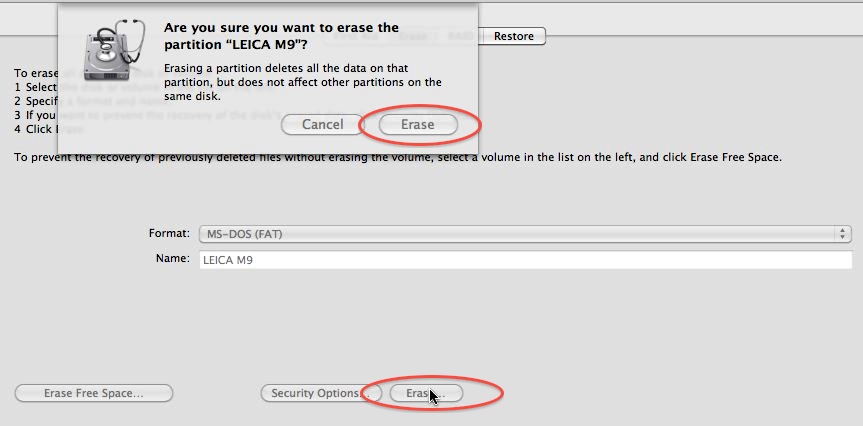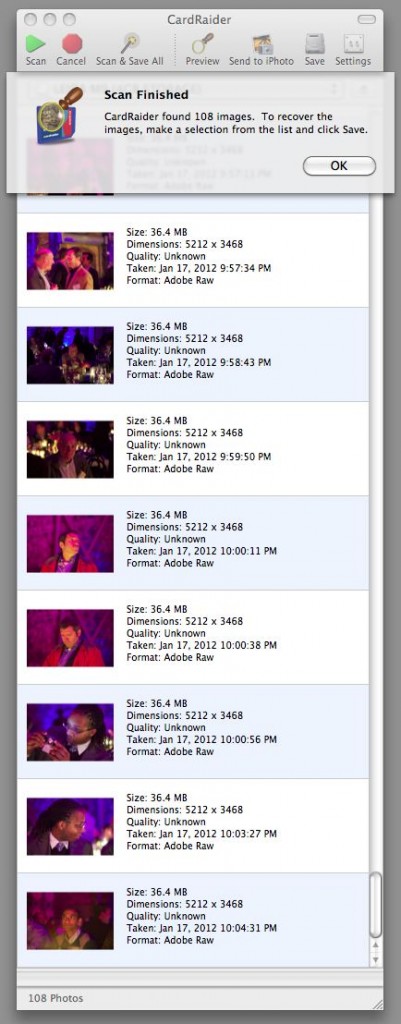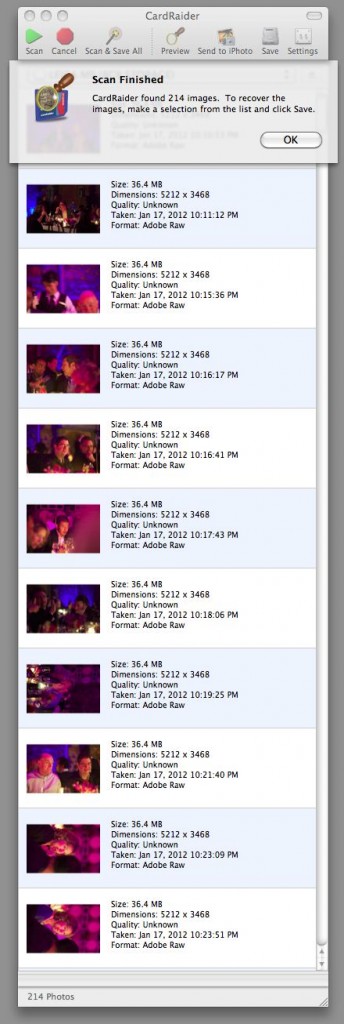From: ecamm
Price: $19.95
Description: A utility for Mac OS X computers that can recover deleted images from memory cards
OS/Platform: Mac OS X only. Not available for PC
Memory cards that are used with cameras (and other devices) can get formatted by mistake. Files can be deleted inadvertently or sometimes the files on the card can suffer corruption. In such instances, having a software utility to recover the images/movies from the card is very handy and can save one a lot of angst and effort. One such product is CardRaider by ecamm, a Massachusetts based company that promises something unique in this day and age – from their website, under what they call their “Customer Service Pledge”, they say: “Whether you need help with sales, order fulfillment or technical support with one of our products, we will treat you like you’ve just walked into our office. No support ticket numbers. No auto-responses. Just direct person-to-person communication to answer questions and resolve issues as quickly as possible.” That sure sounds good, but how good is their product?
I purchased a license and put it through it’s paces. Here’s what I found:
Their UI is pretty simple and straightforward. When you fire up the app here’s what you see:
Note that I had a SD card I had plugged into my card reader and CardRaider immediately detected that and had it selected. Clicking the scan button tells CardRaider to go off and scan the card for files.
Now, when files are deleted from a card/disk, what really happens is that the areas on the card where that file being deleted is stored are marked as usable. The actual data is not “erased”. When new data needs to be written to the card, these areas marked as reusable are overwritten with new data and the old data are lost. This of course means that if you delete (or format) and need to recover files immediately before any new data are written to the card, you should be in good shape. CardRaider definitely delivers in this area. The first card I tested had a 108 DNG files from the Leica M9. After importing these files into Aperture, I used the Mac OS DiskUtility to format the card.
After verifying that the card was formatted and all previous images could not be seen through the Mac OS X Finder, I invoked the “Scan” function on CardRaider. About 12 minutes later, this is what CardRaider has to say:
CardRaider had found and could recover all 108 images that were on the card. Pretty cool!
Next I decided to use a different card and this time format the card in the camera and see what happens. I had 61 DNG files on the card this time. Here’s what CardRaider discovered:
This time CardRaider recovered 214 images when I had originally only 61 images on the card. What gives?!! It turns out that this time CardRaider not only recovered the 61 images I had just formatted off the card, but it recovered images that had been put on the card on two or three different shoot-and-format cycles! All that data had not been overwritten on the card and CardRaider happily recovered all those images as well! Good stuff. I next tried formatting cards in Nikon cameras, as well as the Ricoh GXR. CardRaider performed flawlessly in each case.
One thing that initially annoyed me was that as CardRaider starts scanning, each time it discovers an image, it generates a shutter-click sound. After a while, that can get on one’s nerves. Thankfully, there is an option to turn that off in preferences.
I also tried with with a card from my ebook reader and again, CardRaider performed flawlessly. CardRaider supports jpegs and RAW formats from several camera manufacturers. It also supports several popular movie formats. You can see the entire list of supported files here. In addition to file recovery, CardRaider also has a secure erase function that allows deletion of files from card such that they cannot be recovered.
The verdict? CardRaider is a very useful utility that absolutely delivers what it claims in a clean, easy to use interface. At $19.95 it is very fairly priced and offers the amateur or professional photographer peace of mind. Only available for Mac OS X though. Highly recommended.
Disclaimer: I purchased my copy and do not have any pecuniary interest or relationship with the folks at ecamm. Just a satisfied customer.




